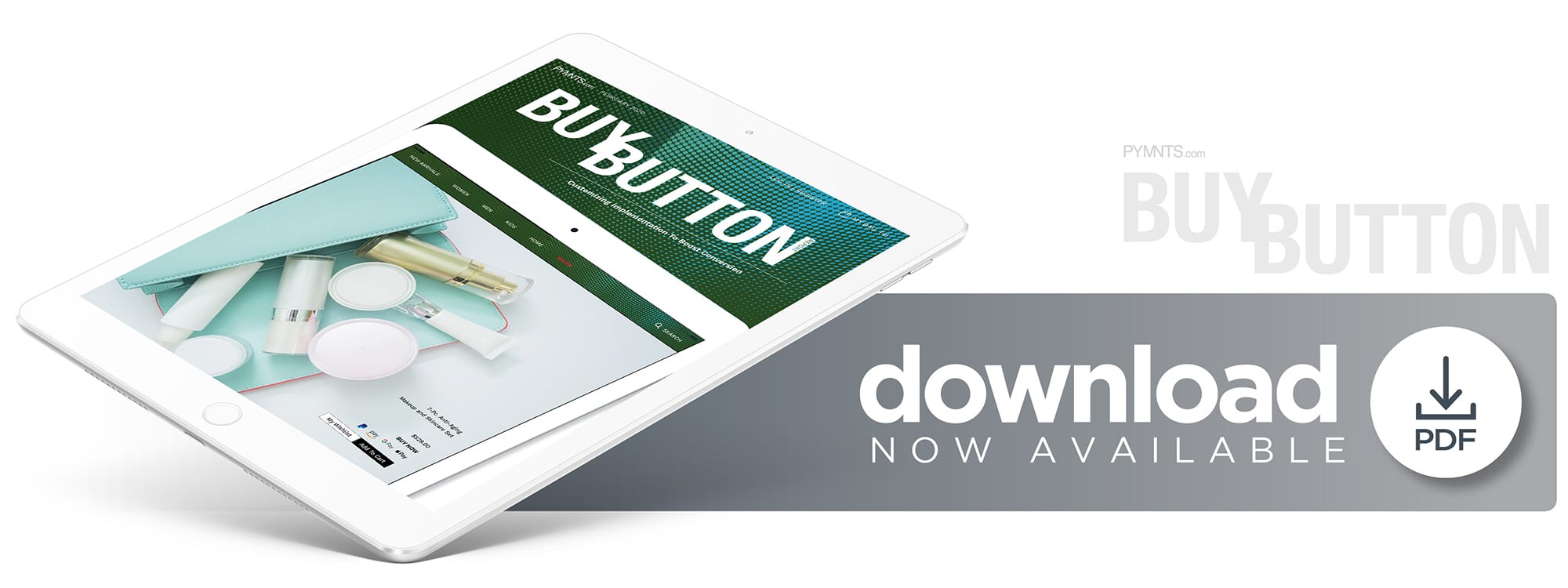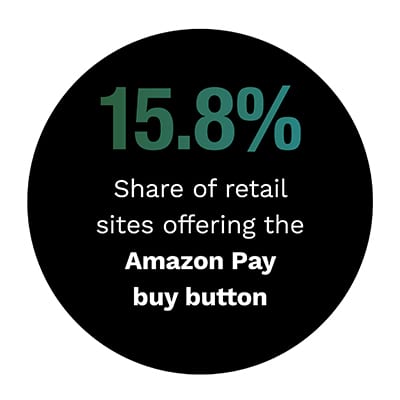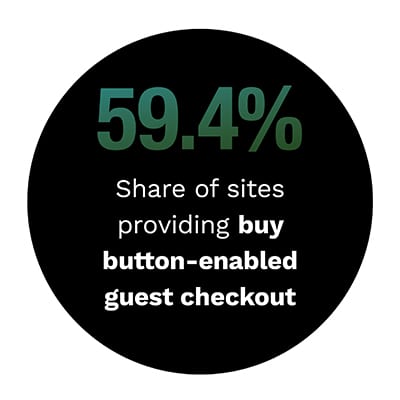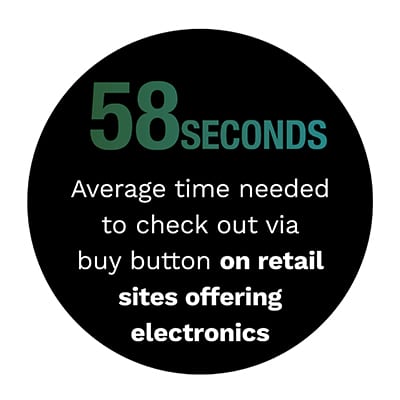
 Speed is the name of the game in the eCommerce industry. The less time it takes shoppers to complete the checkout process, the less likely they are to abandon their carts and the higher the conversion rates a site is likely to have.
Speed is the name of the game in the eCommerce industry. The less time it takes shoppers to complete the checkout process, the less likely they are to abandon their carts and the higher the conversion rates a site is likely to have.
The trouble is that it takes nearly two minutes — 118.5 seconds, in fact — to complete the average eCommerce purchase. That’s almost two minutes of filling out information fields like names, payment information, shipping addresses, billing addresses and more. Long, frustrating form fills like these can frustrate shoppers and drive them away.
Buy bu ttons present a compelling solution to this problem. PYMNTS’ latest research shows that buy buttons reduce the time consumers need to complete purchases by 39.2 percent, and possibly even more, depending on a wide host of factors. The time saved by deploying buy buttons can change dramatically based on the industry of the merchants who use them, their annual sales and whether they provide guest checkout options, to cite a few examples.
ttons present a compelling solution to this problem. PYMNTS’ latest research shows that buy buttons reduce the time consumers need to complete purchases by 39.2 percent, and possibly even more, depending on a wide host of factors. The time saved by deploying buy buttons can change dramatically based on the industry of the merchants who use them, their annual sales and whether they provide guest checkout options, to cite a few examples.
It can be difficult to keep track of all the factors that can change the impact buy buttons have on the sites that host them, so how are retailers to know that they are using theirs in the best manner that suits their unique circumstances?
In the 2020 Buy Button Report: Customizing Implementation To Boost Conversion, PYMNTS examines the checkout processes offered by 1,052 of the web’s leading retail sites to assess the state of their buy button offerings, and how those offerings have made an impact on overall checkout experiences.
Our research shows online shoppers stand to save a great  deal of time from checking out via buy buttons, but not all merchants will see the same benefits from implementing them. Merchants that sell electronics can expect buy buttons to reduce their average checkout times by an entire minute (50.8 percent), for example, while buy buttons on quick-service restaurant (QSR) sites only decrease checkout times by an average of five seconds (3.9 percent).
deal of time from checking out via buy buttons, but not all merchants will see the same benefits from implementing them. Merchants that sell electronics can expect buy buttons to reduce their average checkout times by an entire minute (50.8 percent), for example, while buy buttons on quick-service restaurant (QSR) sites only decrease checkout times by an average of five seconds (3.9 percent).
Some of this is unavoidable. It takes longer for consumers to specify what they would like to order at a QSR than it takes to select what they would like to purchase on electronics sites. QSR shoppers need to specify which item they might like, if they would like any add-ons and whether they might otherwise want to adjust their orders to suit their tastes. In contrast, electronics shoppers typically only need to select the make and model of items they would like to purchase.
Industry is not the o nly factor that impacts buy buttons’ effectiveness, either. They also tend to change depending on whether or not the merchants that offer them provide guest checkout options. Buy buttons reduce checkout times on sites with mandatory user profiles by as little as a single second, but they reduce checkout times on sites with optional profiles and buy button-enabled guest checkouts by as much as 46 percent. This makes sense. There is no way to make checkouts shorter if shoppers need to fill out their information to make site profiles, anyway.
nly factor that impacts buy buttons’ effectiveness, either. They also tend to change depending on whether or not the merchants that offer them provide guest checkout options. Buy buttons reduce checkout times on sites with mandatory user profiles by as little as a single second, but they reduce checkout times on sites with optional profiles and buy button-enabled guest checkouts by as much as 46 percent. This makes sense. There is no way to make checkouts shorter if shoppers need to fill out their information to make site profiles, anyway.
Yet these are only a few of the ways in which retailers’ site metrics — even seemingly unrelated ones — can have a major impact on the effectiveness of their buy buttons.
To learn more about how important it is for merchants to consider these factors when designing and implementing buy button strategies, download the report.